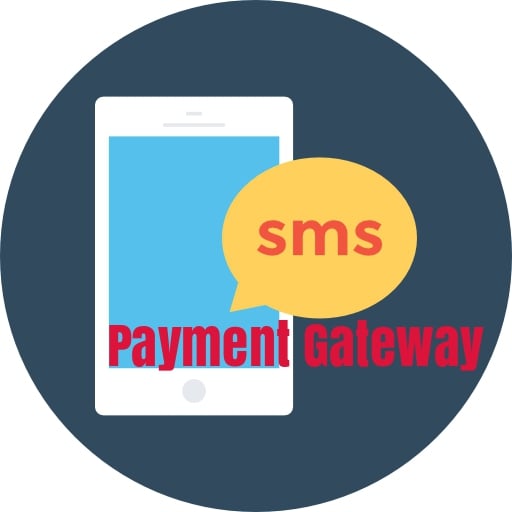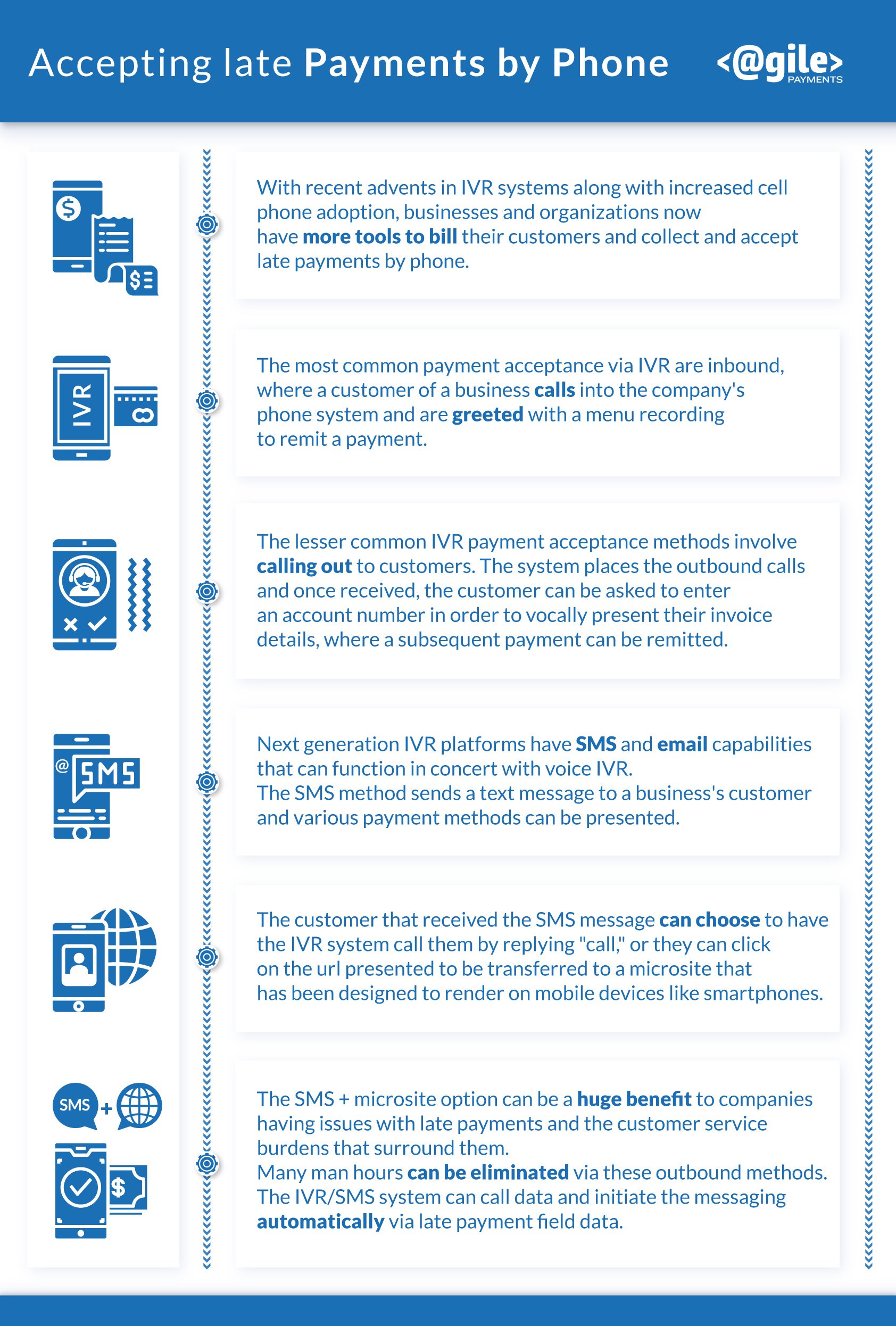Interactive Voice Response (IVR) has been around for quite a while now, and it’s use for payments acceptance has grown significantly in recent years. With recent advents in IVR systems along with increased cell phone adoption, businesses and organizations now have more tools to bill their customers and collect and accept late payments by phone.
The most common payment acceptance via IVR are inbound, where a customer of a business calls into the company’s phone system and are greeted with a menu recording, with one menu item prompting the caller “to remit your invoice payment, press one,” or something of the sort. The caller is then programmatically routed to the IVR system where their invoice details can be called via API and presented to the caller. The caller then enters their card or checking account information and remits payment. Once the transaction has been completed, the caller and the business is notified of the payment completion and the caller can be sent a receipt.
The lesser common IVR payment acceptance methods involve calling out to  customers. Assuming the company has a phone number on file for their customers, the IVR system can be programmed to call a customer and ask for payment remittance of their due invoice. The system places the outbound calls and once received, the customer can be asked to enter an account number in order to vocally present their invoice details, where a subsequent payment can be remitted. Additional security measures can also be placed into the IVR workflow to insure the customer receiving the call that it’s not some sort of phishing scam. Outbound IVR calls for payment remittance are reserved for companies having a customers with recurring invoice.
customers. Assuming the company has a phone number on file for their customers, the IVR system can be programmed to call a customer and ask for payment remittance of their due invoice. The system places the outbound calls and once received, the customer can be asked to enter an account number in order to vocally present their invoice details, where a subsequent payment can be remitted. Additional security measures can also be placed into the IVR workflow to insure the customer receiving the call that it’s not some sort of phishing scam. Outbound IVR calls for payment remittance are reserved for companies having a customers with recurring invoice.
Another lesser common, but increasingly growing IVR payment acceptance method, is SMS text delivery. Next generation IVR platforms have SMS and email capabilities that can function in concert with voice IVR. The SMS method sends a text message to a business’s customer with a script of something like “Hi  , your account in the amount of $
, your account in the amount of $ is due on
is due on  . Click https://billing.agilepayments.com/hash to pay online or reply CALL to pay over the phone at any time.”
. Click https://billing.agilepayments.com/hash to pay online or reply CALL to pay over the phone at any time.”

The customer that received the SMS message can choose to have the IVR system call them by replying “call,” or they can click on the url presented to be transferred to a microsite that has been designed to render on mobile devices like smart phones.
If the customer chooses the “call” option, the outbound call is placed and works much as described earlier. If the customer chooses the microsite option, they are presented with a payment form that has been branded for the business. Branding only goes so far as it relates to consumer security acceptance, so another security measure that can be configured is to have the microsite url represent the company’s website url. This can be accomplished by the company creating a subdomain and pointing the DNS to the IVR system’s microsite IP address. The resulting microsite then appears more authentic and gains customer confidence.
The SMS + microsite option can be a huge benefit to companies having issues with late payments and the customer service burdens that surround them. Many man hours can be eliminated via these outbound methods. The IVR/SMS system can call data and initiate the messaging automatically via late payment field data.
Outbound and SMS payments will only continue to grow. The U.S. population now stands at near 80% having smart phones. While the SMS option requires a cell phone number to be available within the business’s database, outreach campaigns can be initiated to gather that data. Moreover, services are available that can identify cell numbers from landlines. So if a company only has a single phone number field for their customers, those numbers can be identified and tagged as a cell number, enabling that portion of their customer base for the SMS option.
If your business or organization has any IVR Billing needs, reach out to us and we’ll walk you through the possibilities.





